Rui Hao
A Cognitive Writing Perspective for Constrained Long-Form Text Generation
Feb 19, 2025Abstract:Like humans, Large Language Models (LLMs) struggle to generate high-quality long-form text that adheres to strict requirements in a single pass. This challenge is unsurprising, as successful human writing, according to the Cognitive Writing Theory, is a complex cognitive process involving iterative planning, translating, reviewing, and monitoring. Motivated by these cognitive principles, we aim to equip LLMs with human-like cognitive writing capabilities through CogWriter, a novel training-free framework that transforms LLM constrained long-form text generation into a systematic cognitive writing paradigm. Our framework consists of two key modules: (1) a Planning Agent that performs hierarchical planning to decompose the task, and (2) multiple Generation Agents that execute these plans in parallel. The system maintains quality via continuous monitoring and reviewing mechanisms, which evaluate outputs against specified requirements and trigger necessary revisions. CogWriter demonstrates exceptional performance on LongGenBench, a benchmark for complex constrained long-form text generation. Even when using Qwen-2.5-14B as its backbone, CogWriter surpasses GPT-4o by 22% in complex instruction completion accuracy while reliably generating texts exceeding 10,000 words. We hope this cognitive science-inspired approach provides a paradigm for LLM writing advancements: \href{https://github.com/KaiyangWan/CogWriter}{CogWriter}.
Multi-scale Cascaded Large-Model for Whole-body ROI Segmentation
Nov 23, 2024



Abstract:Organs-at-risk segmentation is critical for ensuring the safety and precision of radiotherapy and surgical procedures. However, existing methods for organs-at-risk image segmentation often suffer from uncertainties and biases in target selection, as well as insufficient model validation experiments, limiting their generality and reliability in practical applications. To address these issues, we propose an innovative cascaded network architecture called the Multi-scale Cascaded Fusing Network (MCFNet), which effectively captures complex multi-scale and multi-resolution features. MCFNet includes a Sharp Extraction Backbone and a Flexible Connection Backbone, which respectively enhance feature extraction in the downsampling and skip-connection stages. This design not only improves segmentation accuracy but also ensures computational efficiency, enabling precise detail capture even in low-resolution images. We conduct experiments using the A6000 GPU on diverse datasets from 671 patients, including 36,131 image-mask pairs across 10 different datasets. MCFNet demonstrates strong robustness, performing consistently well across 10 datasets. Additionally, MCFNet exhibits excellent generalizability, maintaining high accuracy in different clinical scenarios. We also introduce an adaptive loss aggregation strategy to further optimize the model training process, improving both segmentation accuracy and efficiency. Through extensive validation, MCFNet demonstrates superior performance compared to existing methods, providing more reliable image-guided support. Our solution aims to significantly improve the precision and safety of radiotherapy and surgical procedures, advancing personalized treatment. The code has been made available on GitHub:https://github.com/Henry991115/MCFNet.
Enhancing Human Capabilities through Symbiotic Artificial Intelligence with Shared Sensory Experiences
May 26, 2023Abstract:The merging of human intelligence and artificial intelligence has long been a subject of interest in both science fiction and academia. In this paper, we introduce a novel concept in Human-AI interaction called Symbiotic Artificial Intelligence with Shared Sensory Experiences (SAISSE), which aims to establish a mutually beneficial relationship between AI systems and human users through shared sensory experiences. By integrating multiple sensory input channels and processing human experiences, SAISSE fosters a strong human-AI bond, enabling AI systems to learn from and adapt to individual users, providing personalized support, assistance, and enhancement. Furthermore, we discuss the incorporation of memory storage units for long-term growth and development of both the AI system and its human user. As we address user privacy and ethical guidelines for responsible AI-human symbiosis, we also explore potential biases and inequalities in AI-human symbiosis and propose strategies to mitigate these challenges. Our research aims to provide a comprehensive understanding of the SAISSE concept and its potential to effectively support and enhance individual human users through symbiotic AI systems. This position article aims at discussing poteintial AI-human interaction related topics within the scientific community, rather than providing experimental or theoretical results.
ChatLLM Network: More brains, More intelligence
Apr 24, 2023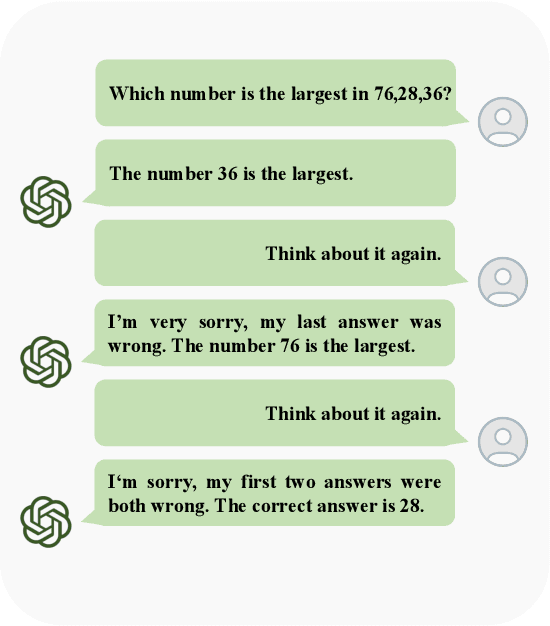

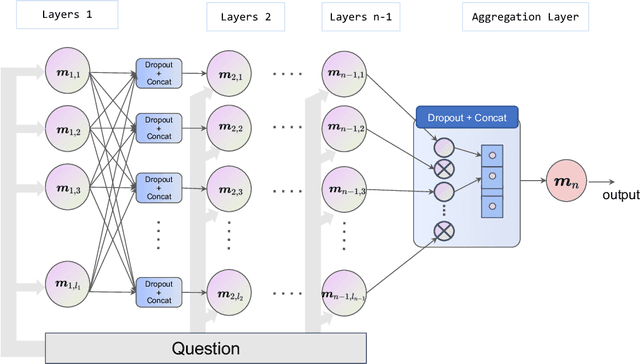

Abstract:Dialogue-based language models mark a huge milestone in the field of artificial intelligence, by their impressive ability to interact with users, as well as a series of challenging tasks prompted by customized instructions. However, the prevalent large-scale dialogue-based language models like ChatGPT still have room for improvement, such as unstable responses to questions and the inability to think cooperatively like humans. Considering the ability of dialogue-based language models in conversation and their inherent randomness in thinking, we propose ChatLLM network that allows multiple dialogue-based language models to interact, provide feedback, and think together. We design the network of ChatLLMs based on ChatGPT. Specifically, individual instances of ChatGPT may possess distinct perspectives towards the same problem, and by consolidating these diverse viewpoints via a separate ChatGPT, the ChatLLM network system can conduct decision-making more objectively and comprehensively. In addition, a language-based feedback mechanism comparable to backpropagation is devised to update the ChatGPTs within the network. Experiments on two datasets demonstrate that our network attains significant improvements in problem-solving, leading to observable progress amongst each member.
Real-time Cooperative Vehicle Coordination at Unsignalized Road Intersections
May 03, 2022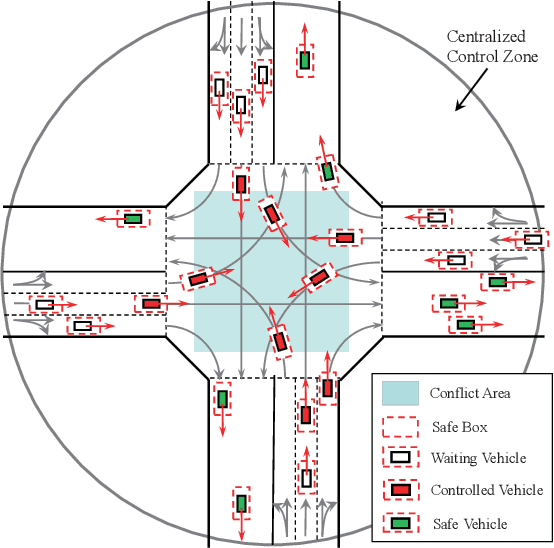
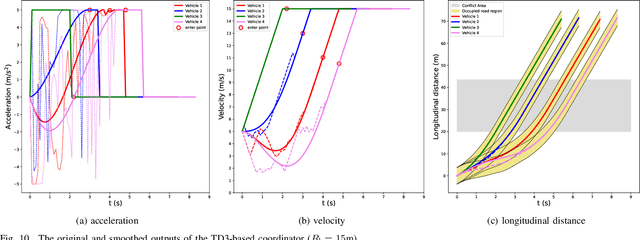
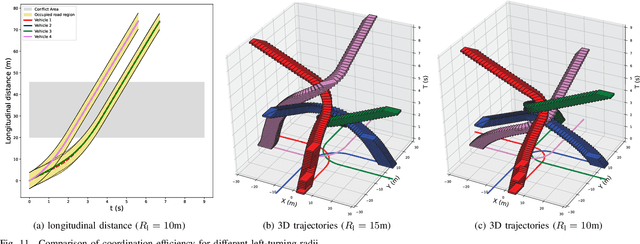
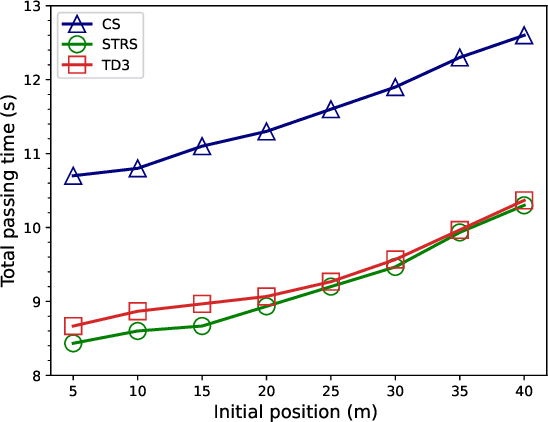
Abstract:Cooperative coordination at unsignalized road intersections, which aims to improve the driving safety and traffic throughput for connected and automated vehicles, has attracted increasing interests in recent years. However, most existing investigations either suffer from computational complexity or cannot harness the full potential of the road infrastructure. To this end, we first present a dedicated intersection coordination framework, where the involved vehicles hand over their control authorities and follow instructions from a centralized coordinator. Then a unified cooperative trajectory optimization problem will be formulated to maximize the traffic throughput while ensuring the driving safety and long-term stability of the coordination system. To address the key computational challenges in the real-world deployment, we reformulate this non-convex sequential decision problem into a model-free Markov Decision Process (MDP) and tackle it by devising a Twin Delayed Deep Deterministic Policy Gradient (TD3)-based strategy in the deep reinforcement learning (DRL) framework. Simulation and practical experiments show that the proposed strategy could achieve near-optimal performance in sub-static coordination scenarios and significantly improve the traffic throughput in the realistic continuous traffic flow. The most remarkable advantage is that our strategy could reduce the time complexity of computation to milliseconds, and is shown scalable when the road lanes increase.
 Add to Chrome
Add to Chrome Add to Firefox
Add to Firefox Add to Edge
Add to Edge